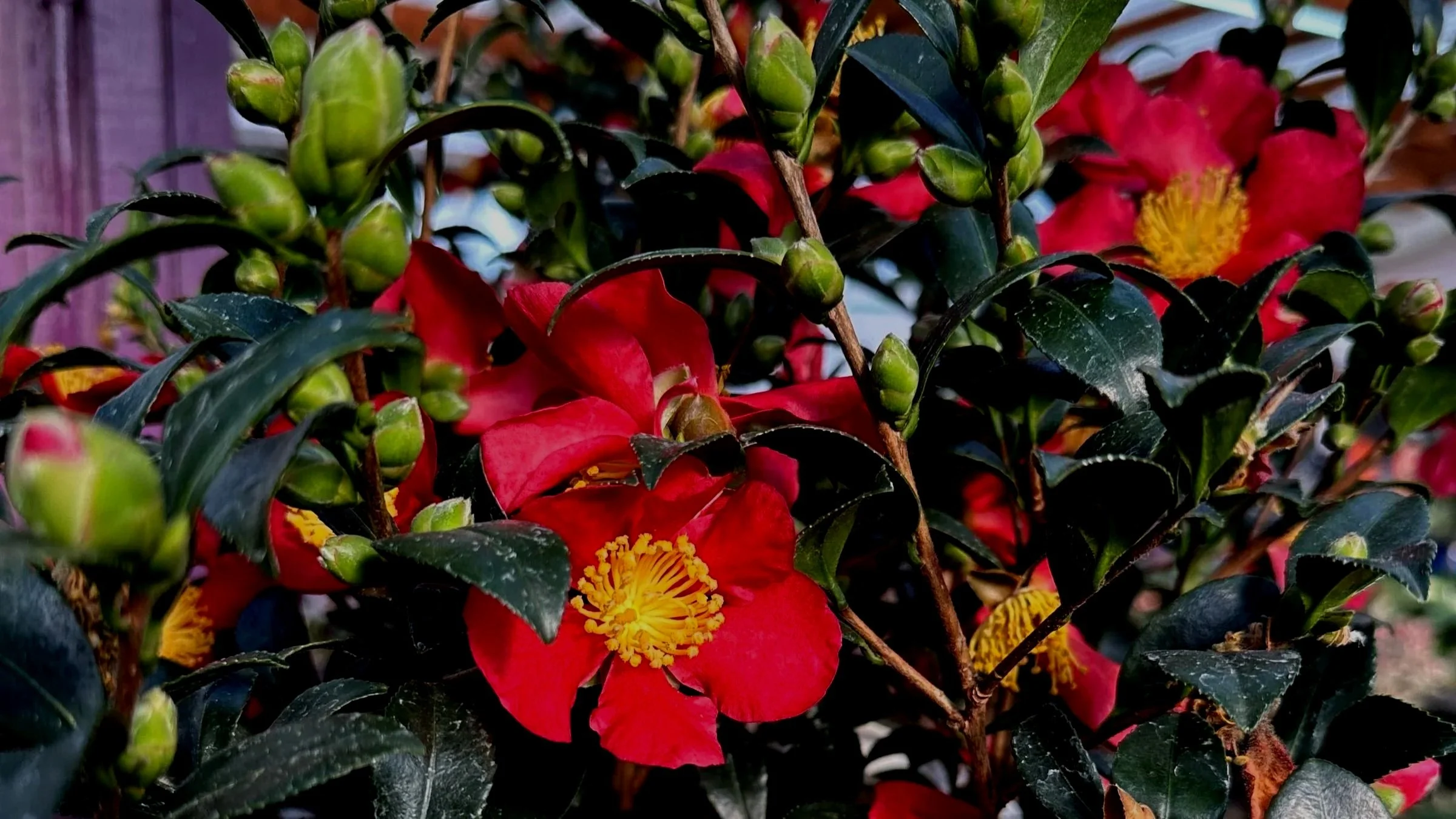When it comes to flowering shrubs there is nothing quite as spectacular as a rhodie in full bloom. Anyone who has grown up in the northwest can attest to the glorious sight of a yard full of these incredible plants. They come in many colors and sizes, are usually evergreen and for the most part are easy to grow. With proper selection a person could actually have a rhodie blooming in their garden from February through June.
Ironically, I have found over the years of owning a garden center that many gardeners have a bad taste in their mouths when it comes to rhodies. What they remember are the monster green shrubs with huge leaves that obliterated their parent’s homes and had to be pruned back every few years to keep them under control. While we still sell larger growing varieties, the vast majority of rhodies on the market these days are compact, self-branching and will top out in the 3-5 foot range, perfect for under windows and along the foundation of our homes.
But rhodies should not be relegated to merely foundation plants. There are over 1000 different species of rhodies (which includes azaleas) and over 5000 hybrids, many of which you might not even recognize as rhodies. Some have leaves as small as one quarter inch with delicate little flowers and thrive in hot dry soil like you would find in a rockery. Others need full shade and have leaves that are covered with a fuzzy material called indumentum which makes them look like Teddy Bears in the garden. Some rhodies are arboreal in nature and will actually form small trees when pruned properly. (When I lived in Nepal I saw forests of rhodies that a person could walk through.)
By far the vast majority of rhodies have rather normal looking leaves and thrive in our northwest maritime climate. Because all rhodies (and azaleas) have very shallow and fine root systems it is imperative that gardeners make the extra effort to amend the soil with plenty of organic material and then top it off with an inch of mulch, all of which will help to retain moisture in the summer and provide better air exchange in the winter. Once established, rhodies can be fairly drought tolerant but if you want fabulous blooms in the spring you should really give them some extra water in the summer and also feed them after they bloom in the spring.
As far as placement, I like to use the rule of thumb that the darker the flower the more sun they will tolerate. All the reds and purples and most pinks do well in full sun while the lighter shades of pink and white prefer some afternoon shade. Also, the larger the leaves the more some shade is appreciated. However, rhodies that are planted in full shade will often tend to be leggy (spindly) and shy bloomers. While rhodies can be planted under a canopy of large conifers it is essential to provide supplemental water if you want them to be happy.
To learn more about the different varieties of rhodies, how to deal with diseases & insects and whether to dead-head or not, plan on attending our class this Saturday May 2nd at 10am. Also on that same day members of the Rhododendron Society will be here from 10am to 2pm to exhibit rhodie flowers and answer your questions and identify varieties. These guys are total fanatics (in a good sense of course) and love to be challenged. See you there!


